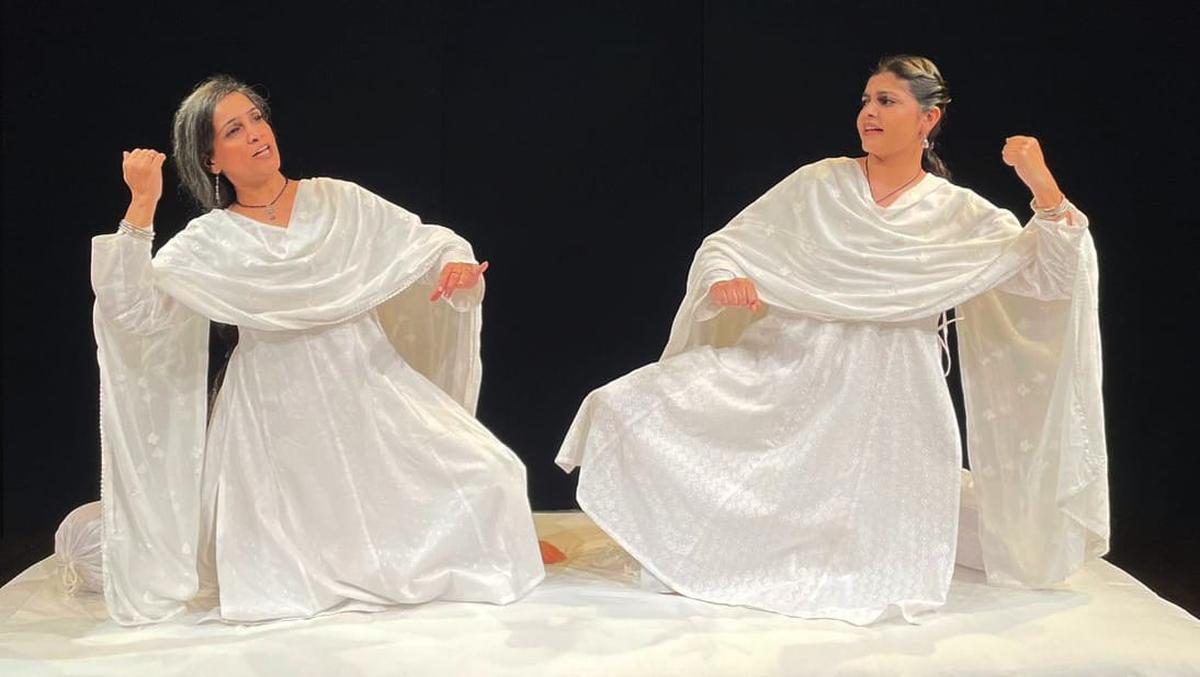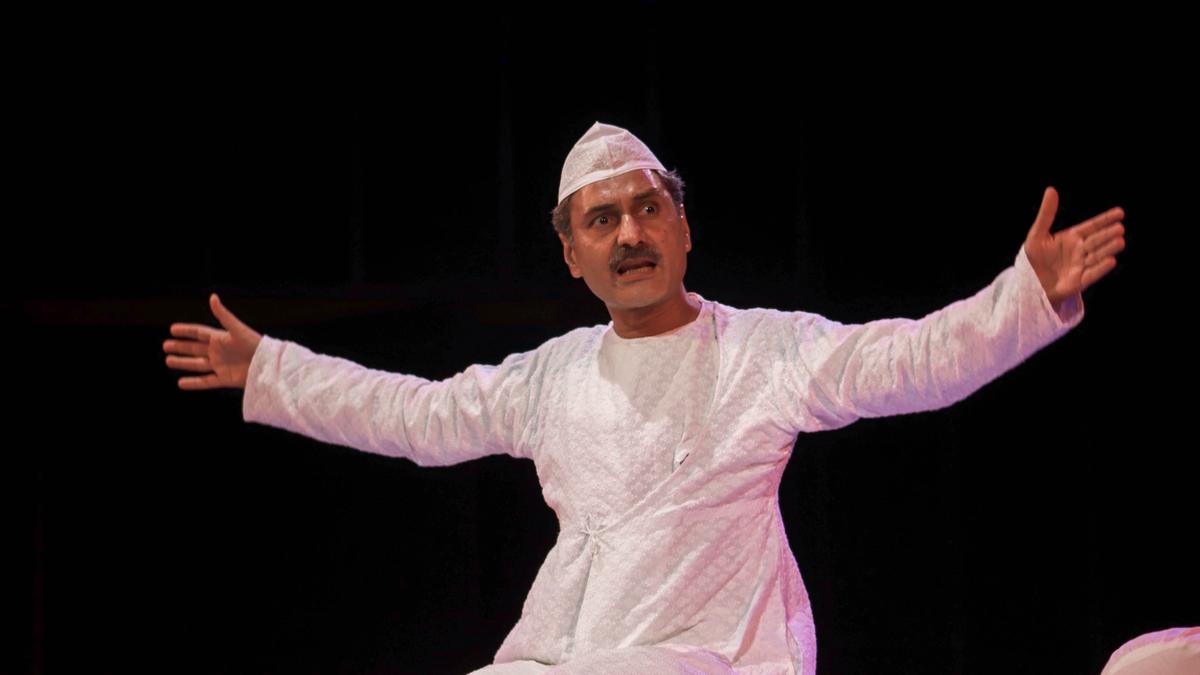The lights come on at Delhi’s LTG Auditorium, revealing only a white mattress on the stage. Two women, each dressed in white salwar kameez, are seated on it. A number of children in the audience wait excitedly to watch an hour-long show of Dastan Alice Ki on a sultry Sunday evening. As the women take turns retelling Lewis Carroll’s famous classic, Alice in Wonderland, in pure Urdu, there is complete silence — often broken by a few laughs from the crowd.
Dastangoi is an ancient Urdu storytelling tradition that developed around the adventures of Amir Hamza, known for his valour and said to be the uncle of Prophet Muhammad. The art form (‘dastan’ means story and ‘goi’ means to tell), which originated in Persia, became popular in the Indian subcontinent in the 19th century. However, with the death of renowned Dastango Mir Baqar Ali in 1928, the form faded into oblivion.
First performance
The great Urdu critic and writer Shamsur Rahman Faruqi had worked extensively on Tilism-e-Hoshruba and Dastan-e-Amir Hamza. In the early 2000s, Mahmood Farooqui, who revived the art form in India, read his works. “His multi-volume research material helped me understand these medieval tales and the linguistic world they inhabited,” recalls Mahmood. It prompted him to conceptualise the first contemporary dastangoi performance, along with his writer-director wife Anusha Rizvi, in 2005. Paying careful attention to sets, costumes and performance elements, the landmark show, which was held in New Delhi, had Farooqui presenting an excerpt from Tilism-e-Hoshruba with theatre artiste Himanshu Tyagi.
The show made two significant innovations. Two performers were brought in instead of one, and it was a formal stage show. Since then, Mahmood has travelled across the globe performing for new audiences. This year, the modern revival of Dastangoi completes 25 years. It has now evolved into a collective with dedicated practitioners (dastangos), many of whom are exceptional theatre artistes.
“Being a dastango isn’t as simple as memorising a script. They must research, draw from multiple sources, weave together stories, improvise during a performance, and engage the audience,” says Mahmood.
From Dastan-e-Manto
| Photo Credit:
Courtesy: Dastangoi Collective
So, Ainee Farooqui, a Ph. D. scholar at Princeton University, has written Dastan Shahid-e-Azam Bhagat Singh and Dastan-e-Jallian based on the Jallianwala Bagh massacre. Veteran dastango Namita Singhai has recently written a dastan on Jawaharlal Nehru, and Poonam Girdhani wrote Dastan Haroun Ki based on Salman Rushdie’s Haroun and the Sea of Stories as well as dastans on the lives of B.R. Ambedkar and the Buddha. Mahmood has now gone a step further and written dastans specifically for children, such as Dastan Alice Ki and Dastan Little Prince Ki. “The idea is to introduce young audiences to Dastangoi, making the art form inclusive, engaging and sustainable across generations,” he adds.
It is not easy to keep a traditional art form alive. The challenges range from lack of funds and sponsorships to logistical constraints of reaching a wider audience. As Mahmood points out, Dastangoi is not just entertainment, but a powerful medium for political and social commentary. “In today’s political climate, expressing dissent or raising provocative ideas can be fraught with challenges,” he says. While the art form may not be financially viable, the team continues to perform passion. “Our reward lies in the connection we form with our audiences, in their smiles and tears,” adds Mahmood.
The Collective also felt the need to create new dastans that would resonate with the contemporary audience. Thus, over the years, the Dastangoi Collective has adapted a wide range of folktales such as Dastan-e-Chouboli and Dastan Raja Vikram Ki, to literary works such as Ghare Bhaire, Dastan-e-Ret Samadhi and biographical narratives like Dastan-e-Irfan-e-Buddh, Dastan-e-Gandhi, Dastan-e-Ambedkar and Mantoiyat to name a few. Even epics have been brought into the Dastangoi format, such as Dastan-e-Karn from the Mahabharata and Dastan Jai Ramji Ki based on A.K. Ramanujan’s 300 Ramayanas.

Poonam Girdhani and Nusrat Ansari in Dastan Alice Ki based on Alice in Wonderland
| Photo Credit:
Courtesy: Dastangoi Collective
There have also been some distinct dastans, such as Dastan-e-Billi as a tribute to art critic and historian B.N. Goswamy, based on his book Indian Cats. Says Mahmood, “While we’ve tried to preserve the traditional fabric of the Dastan, it’s admittedly challenging to recreate the fantastical imagery and grandeur of Tilism-e-Hoshruba. That said, the traditional Dastans remain particularly special for connoisseurs of the Urdu language.”
According to Mahmood, poetry is a common factor to all dastongois. But the writing process for each may differ. Essentially, the topic or the subject dictates the nature of the writing. For instance, in the Mahabharata there are stories within stories; hence, the epic lends itself to poetry and many renditions and translations. On the other hand Dastongois on Bhagat Singh or Ambedkar involves a straightforward narration. It’s all about making them accessible and entertaining,” he adds.
Through workshops and academic engagements, their outreach has extended to schools and colleges across India. Currently, the Collective is developing dastans on diverse themes including one on Guru Dutt and Kabir. “With each new work, the idea is to explore, innovate and deepen the form, ensuring that Dastangoi remains a living, breathing art in the contemporary world,” says Mahmood.
Published – August 06, 2025 02:32 pm IST

